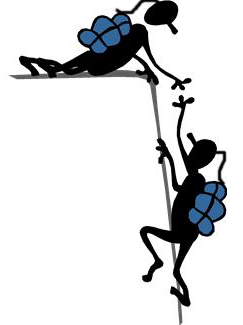Why Change A Habit? Your Legacy Awaits
WHY CHANGE A HABIT? YOUR LEGACY AWAITS (ISSUE 80)
By Diane Gold
Why change a habit?
There’s always tomorrow; I’ll do it when I come back from vacation; I’m too stressed out today; I have time to change; a day won’t make any difference.
 One truth is this: the more times we do any behavior; the less offensive it becomes to us, the more we think it supports our positive lifestyle, the less foreign it becomes, the poorer our judgment becomes about the behavior and the easier it is to keep doing it.
One truth is this: the more times we do any behavior; the less offensive it becomes to us, the more we think it supports our positive lifestyle, the less foreign it becomes, the poorer our judgment becomes about the behavior and the easier it is to keep doing it.
Another truth is this: we don’t know what tomorrow will bring, so let’s live well today.
Imagine five amazing things in our lives that we would never want to give up which are our best reasons in the world to choose one great habit over a destructive habit.
1) We can get to see our daughter’s recital. We have put time into nurturing her creativity because we are truly attentive to what she is doing and value her before ourselves.

2) We can attend our son’s graduation from college because we made the time, we put aside our unrelated, selfish habits that would have interfered with the day.

3) We can go to our daughter’s graduation from vet school 2013 with all the joy in the world. We show the devotion that is in our hearts, we give attention to our daughters and we get to experience one of the milestones in our lives. Because we are putting our attention on our daughter and not on our own needs.
4) We get to write a book, because we are focused and determined. We are meeting deadlines we (or our collaborators) placed on us because we want to complete our book as part of our legacy.
5) When that awesome audition or job interview comes around, we are ready for it. Because we are directing our path to meet our priorities.
SOME DARK BUT CHANGEABLE HABITS
THE ADDICTION TO DRUGS, PRESCRIBED OR SELF-PRESCRIBED
Consuming substance makes the taker feel better, calmer, more balanced, less anxious, more powerful, more charming, less timid, less afraid, less insecure. When we are habitually consuming, we are not particularly attentive to anything other than the next dose, no matter what we say.
THE ADDICTION TO A SIGNIFICANT OTHER
When we are consumed with a negative relationship, we end up obsessed with another person. We treat ourselves poorly by being addicted to our significant other, almost always addicted to drugs or alcohol, whose demeanor toward us self-perpetuates the poor opinion we have of ourselves. Our human habit affects our children and creates misery. And, most of all, our children subtly lose their number one spot.
BINGEING ON FOOD OR ALCOHOL
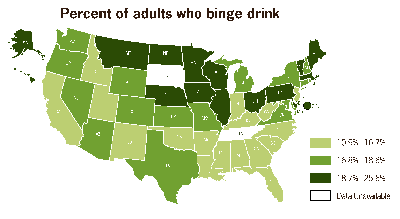
Bingeing on food, the most amazing ice cream and chocolate – with potato chips and pretzels – for a year would make us pretty uncomfortable, result in gaining weight and probably mess with our ability to process sugar correctly. Similar results for alcohol, except the decline happens more quickly.
CONCLUSION
What do these all these habits have in common? Self-pleasure, self-relief, self-esteem issues. That’s SELF, SELF and, SELF. They DON’T have to do with giving, sharing and growing.
If we’ve been on both sides, we know the quality of being a loving family member rather than a needs based habit monger, wins out against the instant gratification horror show.
The invasive nature of habits is crystal clear to see when we don’t have one. Not so easy if we never had one. Those of us who control our many itches, urges or cravings are truly gifted. We are the few.
 We understand that when people say, “Oh, why don’t you just have one,” when speaking about any consumables whose “one” would trigger a series of unhealthy behaviors; it is we who choose our actions. The Greek aphorism “Know Thyself” comes into play; if we have the control to consume “one,” great. If having “one” will trigger having 100 after that, we choose and smile about it. Usually, the “one” act leads to 5,000 more of that “one” action, so the decision to abstain is preferable.
We understand that when people say, “Oh, why don’t you just have one,” when speaking about any consumables whose “one” would trigger a series of unhealthy behaviors; it is we who choose our actions. The Greek aphorism “Know Thyself” comes into play; if we have the control to consume “one,” great. If having “one” will trigger having 100 after that, we choose and smile about it. Usually, the “one” act leads to 5,000 more of that “one” action, so the decision to abstain is preferable.
PRE-PLAN FOR A HABIT
One of the most common habits to want to change is eating the wrong foods or in the wrong quantities. This particular habit plays the most mind games on us because we have to eat to live, and cannot quit food.
We use the same mechanism to change any habit, food included. We need to pre-plan what to do when our urge comes. We need to notice the pleasure we get from the new behavior. We can go for a run, we tie up our hands, go swimming, as long as it is some behavior that is different from what we used to do. And we repeat it. And we repeat it again. And, then, again.
If we do, we will be in position to build wonderful landmarks in our lives that will be our legacy. We won’t be emotionally distraught when big events pass by. We won’t be too overweight to get on a plane to attend a wedding. We won’t be recovering from two days of sleeping it off. We won’t be in a hospital because we overdosed. We won’t be unavailable for our families because we went to the casino.
THE CHANGING A HABIT CREDO
Here are what we can build by changing a habit. The following requires us to love ourselves at the onset or gradually
1) to be available for the legacy that our precious family creates.
2) to build a legacy that revolves around helping humanity and being productive.
3) to take part in collaboration that builds bridges of hope.
4) to be an example for family and community. Although what others say is not something of great concern, acting poorly can lead to pointing fingers, family-embarrassment or community judgment that leads to slowing of career and self. So it might make sense to be valued in public.
5) to look ourselves in the daily mirror and enjoy being the person we are, taking the actions we do, influencing people in a positive way, knowing we are contributing positive energy to the universe.
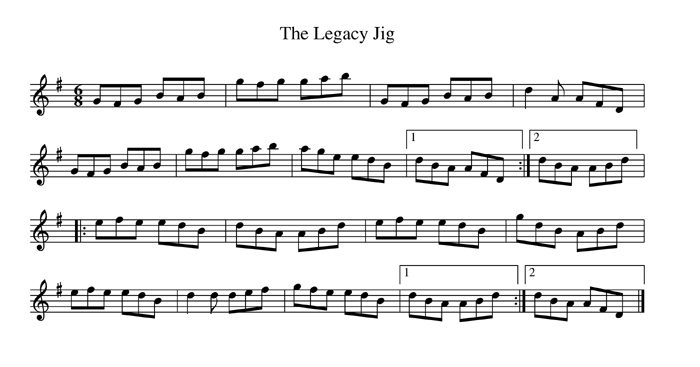
“Changing a habit” is easier said than done.
It takes a truly courageous person to do “it.”
The change takes constant repetition, first for 3 weeks, then for a year.
Support is available for the asking.
We can do it once we take one step!
FEEDBACK
Please leave a comment and LIKE.
DIANE GOLD, AUTHOR
Diane Gold, Founder of Warriors of Weight, Turning Habits Into Health, is a mentor in tai chi, kung fu and meditation, a music, fitness and stress expert, dedicated mom, studying plant-based nutrition.
She has been studying habits for quite some time, especially how she changes her own. She says,
“Whatever your habit is, you are not alone. Whatever your habit is, you can change it. You may have to act as if you are a robot, carrying out a pre-planned move (behavior) with no thought for whether you want to do it or not, for a while. This act might be for as long as a year or as long as forever, depending upon you.
“I have watched myself start a habit and stop a habit. When I decided that stopping the habit after restarting the habit over again took too much effort, I decided to change my habit on a more permanent basis.
I want to be available for my children and my friends. I want to wake up early and feel clear and physically fit. What a great phenomenon to be in good health. I appreciate it and want to nurture it. From now until forever.
It’s not easy, but all it takes is one step. And then, one step. And then, one step. Etc. You can do it!”

 For years, we have been ingesting food that has been modified to yield bigger crop, faster growth, more eye-appealing shape, resist or repel certain insect infestation and more.
For years, we have been ingesting food that has been modified to yield bigger crop, faster growth, more eye-appealing shape, resist or repel certain insect infestation and more. Of course, governments are corporations. They deal with other corporations. When one corporation does a business deal with another, a purchase or transaction is made.
Of course, governments are corporations. They deal with other corporations. When one corporation does a business deal with another, a purchase or transaction is made. 1.
1.
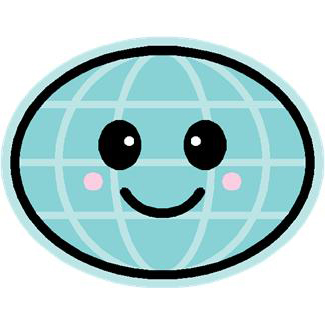 Old habits die hard. Now that our eyes are opening, and many of us are aware of the uncertainties of consuming GMOs, let’s work on changing our habit of consuming without asking. Let’s be diligent so that we can create healthier habits to pass on to our children and to theirs. The more of us who require non-GMO food, the less expensive it will be to certify it as “non-GMO” by label on a package or bushel of produce.
Old habits die hard. Now that our eyes are opening, and many of us are aware of the uncertainties of consuming GMOs, let’s work on changing our habit of consuming without asking. Let’s be diligent so that we can create healthier habits to pass on to our children and to theirs. The more of us who require non-GMO food, the less expensive it will be to certify it as “non-GMO” by label on a package or bushel of produce. When our children come home cursing, speak hurtfully about others, prefer greed to sharing, tell half truths instead of trusting us, and don’t consider that knowledge is freedom; we had better look in the mirror and do something now.
When our children come home cursing, speak hurtfully about others, prefer greed to sharing, tell half truths instead of trusting us, and don’t consider that knowledge is freedom; we had better look in the mirror and do something now. There is nothing more important than engaging with our children. How secure they feel can be based upon a simple genuine interaction on our part. That moment we listened even though we had other responsibilities could have made the difference between the apathetic student and the person who thrives.
There is nothing more important than engaging with our children. How secure they feel can be based upon a simple genuine interaction on our part. That moment we listened even though we had other responsibilities could have made the difference between the apathetic student and the person who thrives. 6)
6)
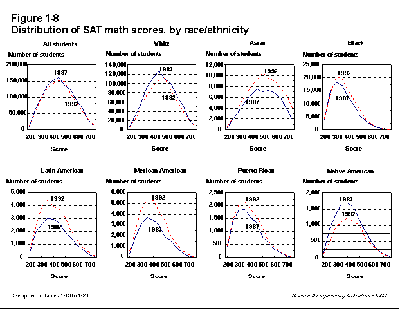 The grade game refers to the habit of using grades to determine success in education. This measurement system is known all over the world. How often does it work?
The grade game refers to the habit of using grades to determine success in education. This measurement system is known all over the world. How often does it work?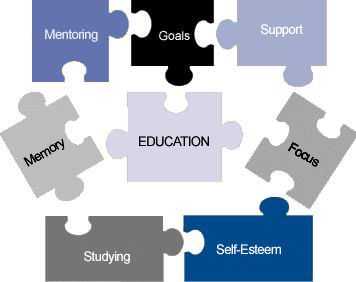 I read an article by Michael Thomsen, “The Case Against Grades,” at Slate.com the other day. In it, he supports the trend moving away from grades in school. He talks about the “negative reinforcement” that comes from this type of system. Having been a specialty teacher for 10 years in the New York City and State School Systems, and a private teacher for another several decades, I have first-hand experience at watching students and serving their differences.
I read an article by Michael Thomsen, “The Case Against Grades,” at Slate.com the other day. In it, he supports the trend moving away from grades in school. He talks about the “negative reinforcement” that comes from this type of system. Having been a specialty teacher for 10 years in the New York City and State School Systems, and a private teacher for another several decades, I have first-hand experience at watching students and serving their differences. 1) Children cut school for fear of failing a test.
1) Children cut school for fear of failing a test.
 Placing children in a molded system that does not embellish their interests and their strengths represses their creativity, curbs their intelligence, crushes their self-worth and perpetuates a system that needs change. Having a system that is evolutionary in nature and is not framed around “the grading game” seems fresh, logical, sensible and
Placing children in a molded system that does not embellish their interests and their strengths represses their creativity, curbs their intelligence, crushes their self-worth and perpetuates a system that needs change. Having a system that is evolutionary in nature and is not framed around “the grading game” seems fresh, logical, sensible and

 Now, I don’t believe that blame is something helpful, but I do believe that, because women have accepted the position of inferiority, they have perpetuated a myth that carries on to this day. I also believe that, if women who are oppressed fight for their own equality (I am not speaking of the gentle oppressions where women make less money, have more domestic responsibilities, get worse jobs, but of stark, horrific oppression such as domestic slavery, sex slavery, trafficking, second class citizenship that exist in many nations), the fight would cause as many female deaths as in any civil war to date.
Now, I don’t believe that blame is something helpful, but I do believe that, because women have accepted the position of inferiority, they have perpetuated a myth that carries on to this day. I also believe that, if women who are oppressed fight for their own equality (I am not speaking of the gentle oppressions where women make less money, have more domestic responsibilities, get worse jobs, but of stark, horrific oppression such as domestic slavery, sex slavery, trafficking, second class citizenship that exist in many nations), the fight would cause as many female deaths as in any civil war to date. There are women who are born into prostitution. In certain sections of the world, 3 generations of women can be found to be prostitutes. In the red light district of Kolkata (formerly spelled Calcutta), a prevalent family business is this: the mother is a prostitute as is her mother. The father waits for the female children of his wife to become 10 years old (or worse, 7 years old) so that he can turn them out into prostitution so that the family can eat and live.
There are women who are born into prostitution. In certain sections of the world, 3 generations of women can be found to be prostitutes. In the red light district of Kolkata (formerly spelled Calcutta), a prevalent family business is this: the mother is a prostitute as is her mother. The father waits for the female children of his wife to become 10 years old (or worse, 7 years old) so that he can turn them out into prostitution so that the family can eat and live. Accepting the thinking that it’s OK to putting children into prostitution for money is a bad habit. It is also a way of thinking and acting that has been accepted in current and past society as normal.
Accepting the thinking that it’s OK to putting children into prostitution for money is a bad habit. It is also a way of thinking and acting that has been accepted in current and past society as normal.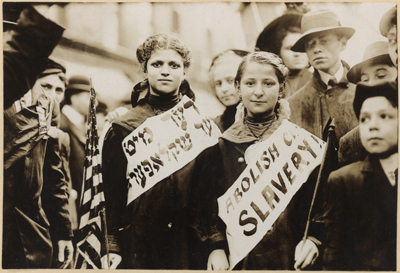 In certain cultures, women are forced into being one of many wives, forced into being consorts, forced into the life of a sex slave, a baby machine or a maid. This is partly the fault of women who accept this. But their alternative would be death, ostracism or, at least, fear of death and disfigurement.
In certain cultures, women are forced into being one of many wives, forced into being consorts, forced into the life of a sex slave, a baby machine or a maid. This is partly the fault of women who accept this. But their alternative would be death, ostracism or, at least, fear of death and disfigurement.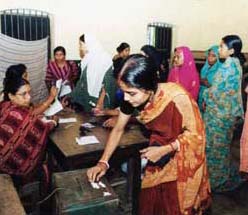 It is time we worked on changing the concept and reality of women as slaves. It is time we all became better human beings. It’s crucial to engage in conversations. It is also important to consistently talk about abuse of women in literature and in every country in the world.
It is time we worked on changing the concept and reality of women as slaves. It is time we all became better human beings. It’s crucial to engage in conversations. It is also important to consistently talk about abuse of women in literature and in every country in the world. The gender issue is alive and well all over the world. There are many sides to it and hurdles we can turn to our advantage. I just read in Wikipedia,
The gender issue is alive and well all over the world. There are many sides to it and hurdles we can turn to our advantage. I just read in Wikipedia, As a direct result of our having been deemed the weaker sex in the past, women may act with cold, ruthless and inflexible behaviors. If we react because of a perceived vulnerable reputation, we’re living someone else’s perception. If we become strong, capable achievers, we will change old thinking. As the decades pass.
As a direct result of our having been deemed the weaker sex in the past, women may act with cold, ruthless and inflexible behaviors. If we react because of a perceived vulnerable reputation, we’re living someone else’s perception. If we become strong, capable achievers, we will change old thinking. As the decades pass. Because our families may have bought into the gender issue; we women may not have learned boxing, martial arts, how to stand up for our physical selves. We may be walking around lacking personal protection training with that shaky inner feeling of slight anxiety. This emotion is not gender specific, although many favor the old gender specific attitudes; this insecurity shows up in anyone who has not been trained in strength training, meditation and some type of combat. A big oversight in our school and parenting systems leaves this out. This deprivation of training causes much stress that exists in anyone who has ever been confronted by a bully, a demanding significant other or an authority figure.
Because our families may have bought into the gender issue; we women may not have learned boxing, martial arts, how to stand up for our physical selves. We may be walking around lacking personal protection training with that shaky inner feeling of slight anxiety. This emotion is not gender specific, although many favor the old gender specific attitudes; this insecurity shows up in anyone who has not been trained in strength training, meditation and some type of combat. A big oversight in our school and parenting systems leaves this out. This deprivation of training causes much stress that exists in anyone who has ever been confronted by a bully, a demanding significant other or an authority figure.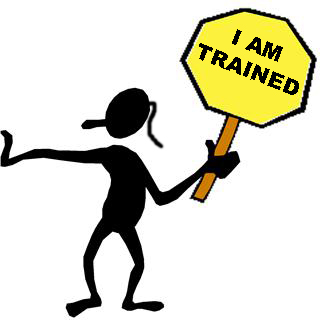 It is most appropriate for every one of us to learn how to protect ourselves: girl, boy, woman, man. As they say, knowledge is power. When we are well trained, we doubt ourselves less, maintain awareness of what’s around the corner and are more prepared to interpret and successfully meet physical contact and body language of others.
It is most appropriate for every one of us to learn how to protect ourselves: girl, boy, woman, man. As they say, knowledge is power. When we are well trained, we doubt ourselves less, maintain awareness of what’s around the corner and are more prepared to interpret and successfully meet physical contact and body language of others. One wonders why personal safety training has not been added to “the” required school curriculum beginning in elementary school. This type of training is basic to our ability to build a strong emotional and physical foundation. How could it be left out? It also tempers the spirit so that violence is met with temperance. Go figure.
One wonders why personal safety training has not been added to “the” required school curriculum beginning in elementary school. This type of training is basic to our ability to build a strong emotional and physical foundation. How could it be left out? It also tempers the spirit so that violence is met with temperance. Go figure. We are not objects to be gawked at dressing for the pleasure of others. We are brilliant beings who can choose the way we look and feel in a world we are involved in changing. If we choose to dress for others, that’s great. As long as it soothes, rather than inflames, our nature.
We are not objects to be gawked at dressing for the pleasure of others. We are brilliant beings who can choose the way we look and feel in a world we are involved in changing. If we choose to dress for others, that’s great. As long as it soothes, rather than inflames, our nature.
 7)
7) We remember the impressions from our childhood, the good, the bad, especially the ugly. There are many we haven’t even actualized into words. They form us, though.
We remember the impressions from our childhood, the good, the bad, especially the ugly. There are many we haven’t even actualized into words. They form us, though.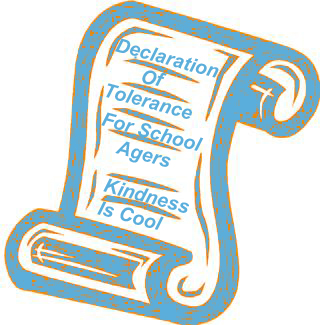 DECLARATION OF TOLERANCE FOR SCHOOL AGERS: KINDNESS IS COOL (ISSUE 53)
DECLARATION OF TOLERANCE FOR SCHOOL AGERS: KINDNESS IS COOL (ISSUE 53)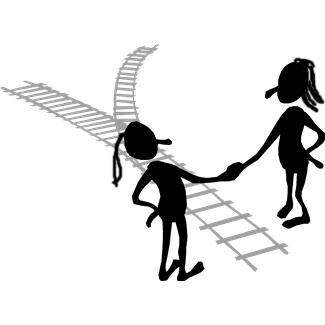
 We follow others, as kids and adults. We call this social proof. If no one goes to help the person who fell down and everyone walks by with no regard; we are less likely to rush to help the afflicted person.
We follow others, as kids and adults. We call this social proof. If no one goes to help the person who fell down and everyone walks by with no regard; we are less likely to rush to help the afflicted person. Kids form belief systems and opinions at home, in school and with peer groups. It is a given that we are influenced on a grand scale by our parents, our caretakers. Prejudice in the home rubs off. But many kids have their first encounter with intolerance, either as target or aggressor, in school.
Kids form belief systems and opinions at home, in school and with peer groups. It is a given that we are influenced on a grand scale by our parents, our caretakers. Prejudice in the home rubs off. But many kids have their first encounter with intolerance, either as target or aggressor, in school.
 2)
2)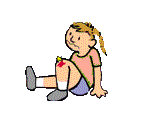 4)
4) 6)
6)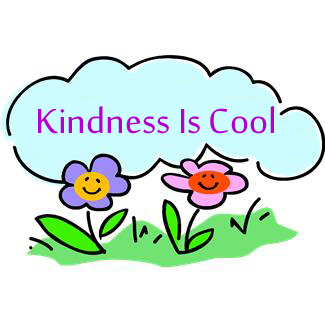 10)
10) 11)
11) Our daughters are deeply affected by our actions and attitude. They know it when we cherish them above all else, and they know when we are led astray.
Our daughters are deeply affected by our actions and attitude. They know it when we cherish them above all else, and they know when we are led astray. 1) STRUCTURE
1) STRUCTURE 3) GIVING TOO MUCH ATTENTION TO A SPOUSE AT THE EXPENSE OF OUR DAUGHTERS
3) GIVING TOO MUCH ATTENTION TO A SPOUSE AT THE EXPENSE OF OUR DAUGHTERS